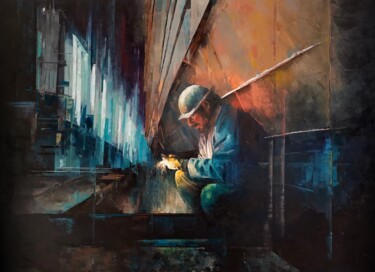937 原创艺术品,限量版和版画:
Discover original contemporary Industry artworks on ArtMajeur
Contemporary industry artworks are a unique form of original artwork that showcase the beauty and complexity of modern industry. These artworks are created using a variety of materials and supports, including metal, wood, and canvas. The use of recycled materials is also common in these pieces, adding an eco-friendly element to the work. What sets these artworks apart is their ability to capture the essence of modern industry, with its sleek lines, complex machinery, and vibrant energy. They offer a fresh perspective on the world of industry, drawing attention to the beauty and artistry that can be found in even the most utilitarian of objects.
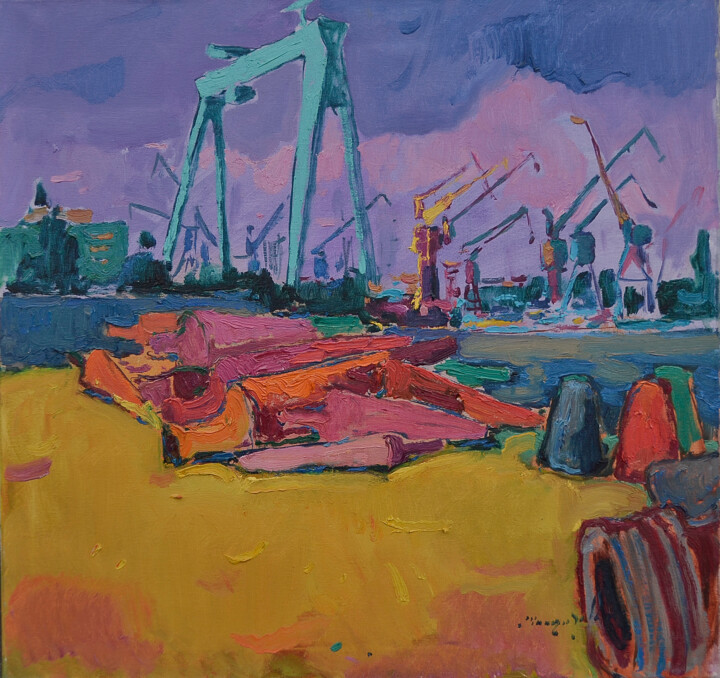
©2019 Alexander Shandor
Origins and History
The origin of original contemporary Industry artworks can be traced back to the 1960s when artists began to incorporate industrial materials and processes into their work. This marked a departure from traditional fine art, which had focused on more traditional mediums such as paint and sculpture. The movement gained momentum in the 1970s and 1980s, with artists exploring themes related to consumer culture, globalization, and the impact of industry on the environment. Important figures in the movement include Richard Serra, Claes Oldenburg, and Donald Judd. Today, contemporary Industry artworks continue to push the boundaries of what is considered art, with artists exploring new materials and techniques to create works that comment on the modern world. Important questions related to these artworks include how they challenge traditional notions of beauty and how they engage with issues related to sustainability and environmentalism.
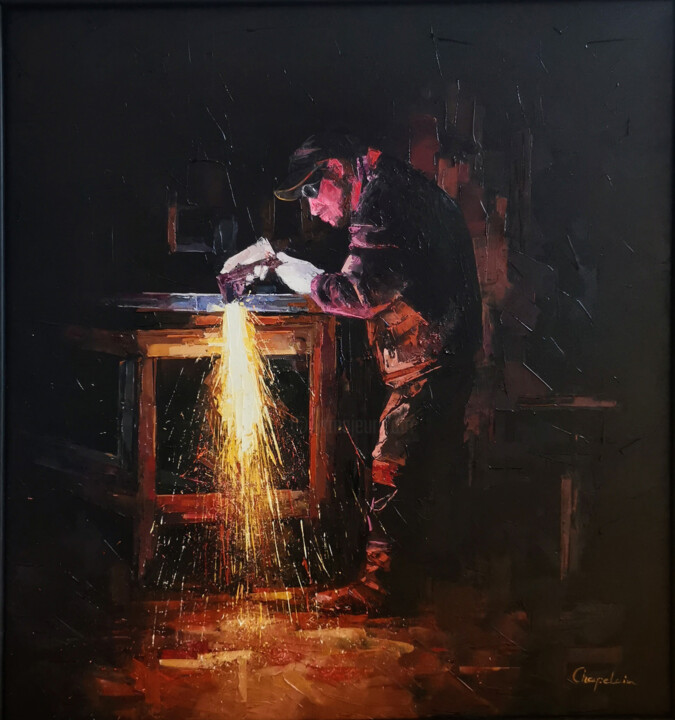
©2023 Nathalie Chapelain
Evolutions of theses works in the contemporary art market
Original contemporary Industry artworks have come a long way in recent years. From the mundane factory machines to the majestic skyscrapers, artists have found new ways to capture the essence of the industrial world. With the advent of modern technology, artists have been able to create pieces that are both aesthetically pleasing and thought-provoking. These artworks have become an important part of the contemporary art market, attracting collectors and enthusiasts alike. The evolution of these artworks has led to new forms and techniques, such as digital art and 3D printing. The use of recycled materials and found objects has also become more prevalent, reflecting our society’s growing concern for the environment. As a result, Industry art has become a powerful medium for social commentary, provoking discussions around issues such as sustainability and consumerism. Through their creative expressions, Industry artists have captured the beauty and complexity of modern society, making their artworks a valuable addition to any art collection.

©2024 Jean-Marc Gardeux
Related Famous Artists
Contemporary artists have been creating thought-provoking and visually stunning works inspired by the industrial world. These artists use a variety of mediums, including painting, sculpture, and photography, to explore the beauty and complexity of the contemporary industry artworks.
One such artist is a painter who creates large-scale, abstract pieces that depict the intricate details of industrial machinery. Another artist creates sculptures using recycled materials, highlighting the impact of industrialization on the environment. A photographer captures stunning images of abandoned factories and warehouses, showing the beauty in decay.
Another artist is famous for his hyper-realistic paintings of factories and smokestacks, creating a sense of awe and wonder in the viewer. A mixed-media artist uses found objects and industrial materials to create intricate and detailed installations that comment on the relationship between humans and machines.
These artists are not only creating visually stunning works of art, but they are also challenging our perceptions of the industrial world. Their works raise important questions about the impact of industry on society and the environment, while also celebrating the beauty and complexity of the contemporary industry artworks.
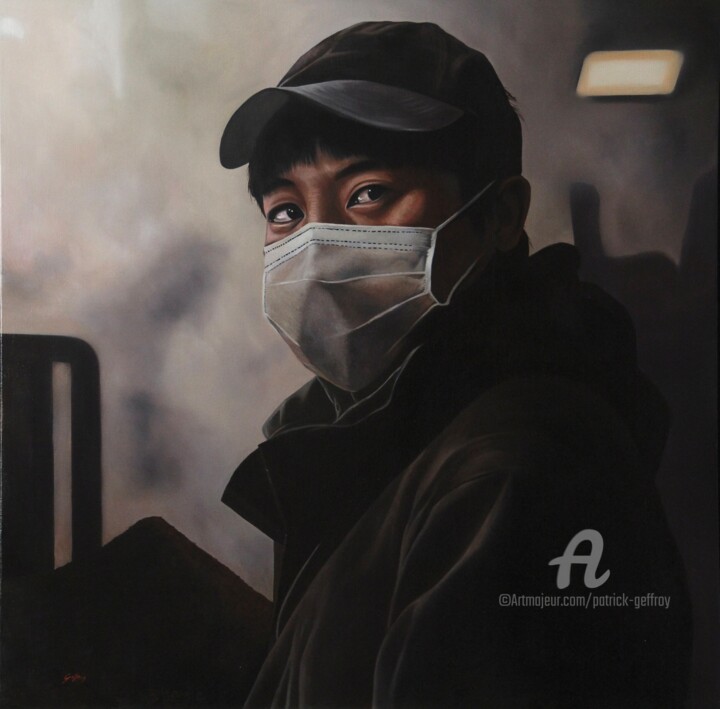
©2024 Patrick Geffroy
Notable original contemporary Industry artworks
Contemporary Industry artworks are a reflection of our society and the impact it has on our environment. Here are some well-known artworks that demonstrate the effects of industrialization on our world.
"Shipbreaking #15" by Edward Burtynsky (2001) is a photograph that captures the destruction of old ships in Bangladesh. The image shows the ships being dismantled by manual labor, revealing the dangerous working conditions and environmental damage caused by the shipbreaking industry.
"Oil" by Edward Ruscha (1964) is a painting that depicts the word "OIL" in bold letters against a blue background. The artwork is a commentary on the role of oil in modern society and its impact on our environment and politics.
"The Waste Land" by Tacita Dean (2018) is a film installation that explores the decline of industry in the UK and the impact it has had on local communities. The film features footage of abandoned factories and interviews with former workers, highlighting the human cost of deindustrialization.
"Watermark" by Jennifer Baichwal and Edward Burtynsky (2013) is a documentary film that explores the effects of industrialization on water resources around the world. The film features stunning aerial shots of landscapes affected by mining, damming, and other industrial activities.
"Factory" by Andy Warhol (1964) is a series of silkscreen prints that depict various industrial products and machinery. The artwork is a celebration of the beauty of mass-produced objects and the role of industry in shaping our modern world.
These artworks demonstrate the complex relationship between industry and the environment, and the impact it has on our lives. They invite us to reflect on our consumption habits and the choices we make as a society.
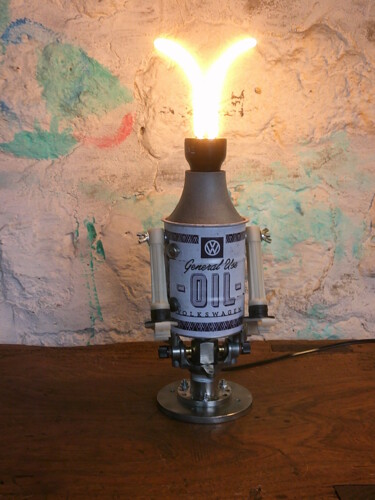
Leferailleur02
设计 | 15.4x5.5 in

Mahesh Chathuranga Ekanayake
雕塑 - 树脂 | 12x14 in
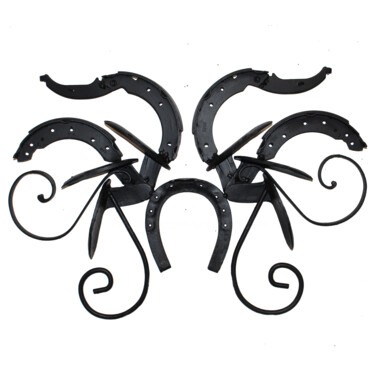
Jonathan Pradillon
雕塑 - 金属 | 16.9x24.4 in

Majic Vic
摄影 | 9.1x12.2 in













